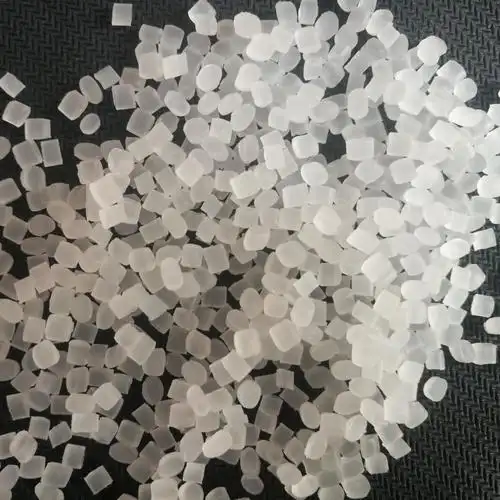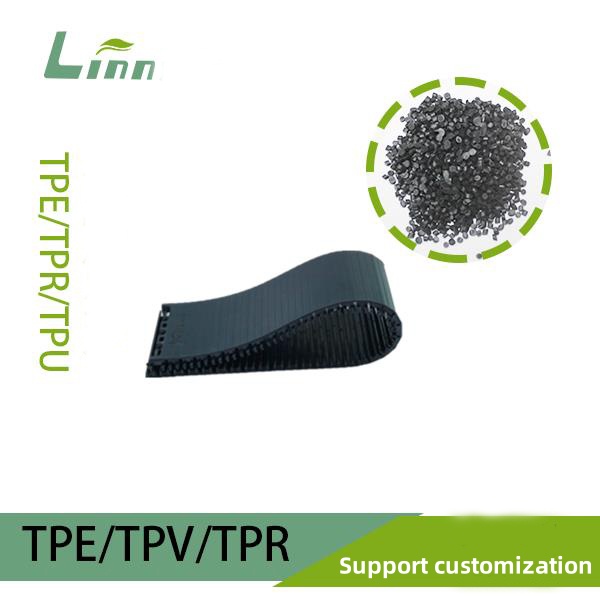Thermoplastic Elastomer (TPE) granulation is a fascinating yet intricate process, transforming raw materials into versatile pellets used across industries, from automotive parts to medical devices. But let’s be real—working with molten polymers, heavy machinery, and high temperatures is no walk in the park. Safety is not just a checklist; it’s the heartbeat of a smooth operation. As someone who’s spent years in the manufacturing trenches, I’ve seen how a single oversight can turn a productive day into chaos. This article dives deep into the critical safety measures you need to prioritize during TPE granulation, blending practical tips with real-world insights to keep your workplace safe and thriving.

Understanding the User’s Intent
When someone searches for “safety considerations in TPE granulation production,” they’re likely a plant manager, safety officer, or technician looking to either set up a new facility, train staff, or troubleshoot existing hazards. Their core need? Clear, actionable guidance to prevent accidents, protect workers, and ensure compliance with regulations. They’re not after vague theories—they want specifics, grounded in expertise, that address real risks like burns, equipment malfunctions, or chemical exposures. With this in mind, let’s explore the safety landscape of TPE granulation with a focus on clarity, practicality, and a touch of human connection.
The TPE Granulation Process: A Quick Overview
Before we dive into safety, picture this: TPE granulation is like sculpting with molten lava. Raw TPE materials—think rubbery, flexible polymers—are melted, extruded, cooled, and cut into tiny pellets. It involves high-heat extruders, sharp pelletizers, and cooling systems, all humming in a symphony of mechanical precision. But with great power comes great responsibility. The process is riddled with potential hazards, from scorching temperatures to dust inhalation. Let’s break down the key safety considerations to keep the operation smooth and the team safe.
Key Safety Considerations in TPE Granulation
1. Thermal Hazards: Taming the Heat Beast
TPE granulation often involves temperatures exceeding 300°C (572°F) in extruders. One wrong move, and you’re dealing with burns that can change a worker’s life in seconds. I’ve walked factory floors where the air shimmers with heat, and trust me, complacency is your worst enemy here.
Insulated Equipment: Ensure extruders and hot surfaces are properly insulated. Regular checks for wear and tear on insulation can prevent accidental contact.
Personal Protective Equipment (PPE): Workers must wear heat-resistant gloves, face shields, and flame-retardant clothing. I once saw a technician dodge a severe burn because his gloves held up against a sudden molten TPE splash.
Training: Conduct regular training on handling hot equipment. Role-play scenarios like emergency shutdowns to build muscle memory.
Signage and Barriers: Use clear warning signs and physical barriers around hot zones. A simple “Caution: Hot Surface” sign can be a lifesaver.

2. Machinery Safety: Keeping the Giants in Check
The extruders and pelletizers in TPE granulation are like mechanical giants—powerful but unforgiving. A misstep near a moving part can lead to catastrophic injuries.
Lockout/Tagout (LOTO) Procedures: Before maintenance, always follow LOTO protocols to de-energize equipment. I’ve heard horror stories of machines restarting during cleaning because someone skipped this step.
Guarding: Ensure all moving parts, like pelletizer blades, are shielded. Regular inspections can catch loose or damaged guards.
Emergency Stops: Install easily accessible emergency stop buttons and test them monthly. Imagine the panic if a worker’s sleeve gets caught, and the stop button is out of reach.
Operator Training: Only trained personnel should operate machinery. A rookie mistake can jam an extruder, causing pressure buildup and potential explosions.
3. Dust and Fume Control: Breathing Easy
TPE granulation can generate fine dust and volatile organic compounds (VOCs), which are like invisible gremlins wreaking havoc on lungs and air quality.
Ventilation Systems: Install high-efficiency ventilation systems to capture dust and fumes. I’ve been in plants where poor ventilation left workers coughing and dizzy—don’t let that be your facility.
Respiratory Protection: Provide N95 respirators or better for workers in dusty areas. Fit-testing ensures they actually work.
Housekeeping: Regularly clean work areas to prevent dust accumulation. A spark in a dusty environment can ignite a fire faster than you’d believe.
Air Monitoring: Use air quality monitors to detect VOC levels. If levels spike, it’s a red flag to check your ventilation or material handling processes.
4. Chemical Safety: Handling the Raw Stuff
TPE production often involves additives like stabilizers or plasticizers, which can be hazardous if mishandled. Spills or improper storage can turn your plant into a chemistry experiment gone wrong.
Material Safety Data Sheets (MSDS): Keep updated MSDS for all chemicals on-site. Train workers to read and understand them.
Spill Kits: Equip the facility with spill kits and train staff on their use. I once saw a minor spill escalate because no one knew where the kit was.
Proper Storage: Store chemicals in designated, well-ventilated areas away from heat sources. Segregate incompatible materials to avoid reactions.
PPE for Chemical Handling: Use chemical-resistant gloves and goggles when handling additives. A splash in the eye is no joke.
5. Ergonomics and Manual Handling: Saving Backs and Joints
Lifting heavy bags of TPE pellets or standing for long shifts can wear down even the toughest workers. Ergonomics isn’t just about comfort—it’s about preventing long-term injuries.
Lifting Aids: Use forklifts or hoists for heavy loads. I’ve seen workers strain their backs trying to be heroes with 50-pound bags.
Workstation Design: Adjust workstation heights to reduce bending or reaching. A well-designed setup feels like a hug to your spine.
Breaks and Rotation: Schedule regular breaks and rotate tasks to prevent repetitive strain. A fatigued worker is more likely to make mistakes.
Training: Teach proper lifting techniques—bend at the knees, not the back. It’s simple but game-changing.

6. Fire and Explosion Risks: Preventing the Big Bang
With high temperatures, dust, and flammable additives, fire risks are a constant shadow in TPE granulation. A small spark can escalate into a nightmare.
Fire Suppression Systems: Install sprinklers and fire extinguishers suited for chemical fires. Test them regularly.
No Smoking Zones: Enforce strict no-smoking policies near production areas. A single cigarette butt can spell disaster.
Static Control: Use anti-static flooring and grounding straps to prevent static sparks. I’ve seen static ignite dust clouds in poorly managed plants.
Emergency Drills: Conduct fire drills quarterly. Knowing evacuation routes can mean the difference between life and death.
7. Electrical Safety: Avoiding Shocks and Short Circuits
Electrical systems power the granulation process, but faulty wiring or improper handling can lead to shocks or fires.
Regular Inspections: Have electricians inspect wiring and equipment annually. A frayed cable can cause more than just downtime.
Grounding: Ensure all equipment is properly grounded to prevent shocks.
PPE: Use insulated gloves and tools when working on electrical systems.
Training: Train workers to recognize electrical hazards, like exposed wires or water near equipment.
Safety Equipment Checklist
To make things crystal clear, here’s a handy table summarizing the essential safety equipment for TPE granulation:
|
Equipment |
Purpose |
Frequency of Check |
Key Notes |
|---|---|---|---|
|
Heat-resistant gloves |
Protect against burns |
Before each shift |
Ensure no tears or wear |
|
N95 respirators |
Prevent dust/fume inhalation |
Weekly fit-testing |
Replace if damaged or soiled |
|
Fire extinguishers |
Combat chemical fires |
Monthly |
Ensure accessibility and proper pressure |
|
Spill kits |
Handle chemical spills |
After each use |
Restock immediately after use |
This table isn’t just a checklist—it’s your lifeline. Keep it posted in the control room or break area for quick reference.
A Personal Reflection: Learning from Near-Misses
Years ago, I worked in a plant where a new operator ignored a warning light on an extruder. The machine overheated, and molten TPE sprayed across the floor. No one was hurt, thank goodness, but the cleanup took days, and the lesson stuck with me. Near-misses are wake-up calls. They remind us that safety isn’t just about following rules—it’s about staying vigilant, respecting the process, and caring for the team. Every time I walk into a granulation facility, I scan for those little red flags: a loose guard, a dusty corner, a worker skipping PPE. It’s personal for me because I know the cost of cutting corners.
Regulatory Compliance: Staying on the Right Side of the Law
Safety isn’t just about avoiding accidents—it’s about meeting legal standards. In many countries, organizations like OSHA (Occupational Safety and Health Administration) or equivalent bodies set strict guidelines for manufacturing. For TPE granulation, key regulations include:
Machine Guarding Standards: Ensure all moving parts are shielded (e.g., OSHA 1910.212).
Hazard Communication: Provide clear labeling and MSDS for chemicals (e.g., OSHA 1910.1200).
Respiratory Protection: Mandate proper respirators for dust exposure (e.g., OSHA 1910.134).
Non-compliance can lead to fines, shutdowns, or worse—lawsuits from injured workers. Regular audits and staying updated on local regulations are non-negotiable. I’ve seen plants scramble during surprise inspections because they didn’t keep up. Don’t let that be you.

Building a Safety Culture: The Human Element
Rules and equipment are vital, but the real magic happens when safety becomes part of your team’s DNA. A safety culture is like planting a seed—it grows with care and consistency. Encourage workers to speak up about hazards without fear of retaliation. Celebrate small wins, like a month without incidents. Share stories of how safety measures saved the day—it makes the abstract feel real. I once worked with a supervisor who started every shift with a quick safety tip. It felt cheesy at first, but it kept us sharp.
Practical Tips for Implementation
Daily Safety Briefs: Start each shift with a 5-minute rundown of hazards and reminders.
Anonymous Reporting: Set up a system for workers to report issues without fear.
Regular Audits: Conduct monthly safety walkthroughs with a checklist.
Invest in Training: Budget for ongoing training, not just a one-off session. It’s worth every penny.
Engage Leadership: Get managers on the floor, not just in the office. Their presence shows safety matters.
The Bigger Picture: Why Safety Matters
Beyond preventing injuries, prioritizing safety boosts morale, reduces downtime, and saves money. A safe plant is a productive plant. Workers who feel protected are more engaged, and that’s a win for everyone. I’ve seen teams transform when they know their well-being is the top priority—it’s like a weight lifts, and the whole operation hums.
Frequently Asked Questions (FAQs)
Q: What’s the most common injury in TPE granulation?
Burns from hot equipment or molten TPE are the most frequent, followed by cuts from pelletizers. Proper PPE and training can prevent most of these.
Q: How often should safety equipment be inspected?
Daily visual checks for PPE and weekly/monthly inspections for fire extinguishers, ventilation systems, and machine guards are standard. Refer to the table above for specifics.
Q: Can small facilities afford robust safety measures?
Absolutely. Start with low-cost solutions like clear signage, regular training, and strict housekeeping. Invest in critical equipment like fire extinguishers and spill kits as budgets allow.
Q: What should I do if a chemical spill occurs?
Evacuate the area, notify supervisors, and use spill kits as trained. Never attempt to clean without proper PPE and knowledge of the chemical’s properties.
Q: How do I convince my team to take safety seriously?
Lead by example—wear PPE, follow protocols, and share real stories of accidents or near-misses. Reward compliance and make safety a shared goal.
Wrapping Up
TPE granulation is a dynamic process, but it’s not without its dangers. By prioritizing thermal safety, machinery protocols, dust control, chemical handling, ergonomics, fire prevention, and electrical safety, you can create a workplace where everyone goes home unharmed. It’s not just about rules—it’s about caring for the people who keep the operation running. As someone who’s seen the good, the bad, and the downright scary in manufacturing, I urge you to make safety your north star. It’s the foundation of a plant that doesn’t just survive but thrives.





